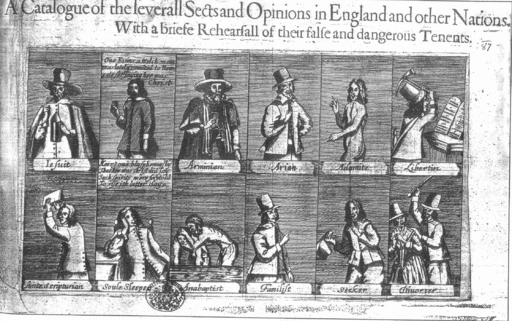The Second Turning after the defeat of the Spanish Armada lasted from 1621 to 1649. Before going with King Charles I Dissolves Parliament (1629), the specific Grid item for that Second Turning was planned as The First Thanksgiving (1621). This seemed a good match for an Awakening period: The Pilgrims headed to the New World for fundamentally religious reasons, they saw their successes as the hand of Providence, and their Thanksgiving feast was a way to acknowledge God's involvement in their lives.
 |
| English Dissenters: Just one of the topics that pops up when attempting to identify the historical context of Thanksgiving, and good luck trying to explain how any of them are related. |
Although that’s all true, none of these indicators were strong enough to tie the harvest feast with the local natives to the concept of a Second Turning/Awakening. Or, perhaps it would be better to say, attempting to explain WHY these indicators DID strongly tie the events with the model kept requiring in-depth supporting documentation on disparate items like:
- What the clothes the Pilgrims wore said about them.
- The Vestments Controversy and the rise of Puritanism
- How Calvinism related to Puritanism and Separatism
- Why the Pilgrims were in the Netherlands, and why they thought it necessary to depart when they did (and why that probably does tie usefully to their Turning).
- How the Pilgrims managed to survive despite arriving too late in the season to farm effectively, while surrounded by native tribes who didn't necessarily want them there.
- Why Tisquantum was there when they arrived, and the part he played in their successes.
- To what extent the colonists saw their situation in religious terms.
After a while, it became clear that there wasn’t a clear and concise way to assert that The First Thanksgiving was a memorable example of events in a Second Turning. When 1629 was chosen instead, it came together much more easily.
No comments:
Post a Comment